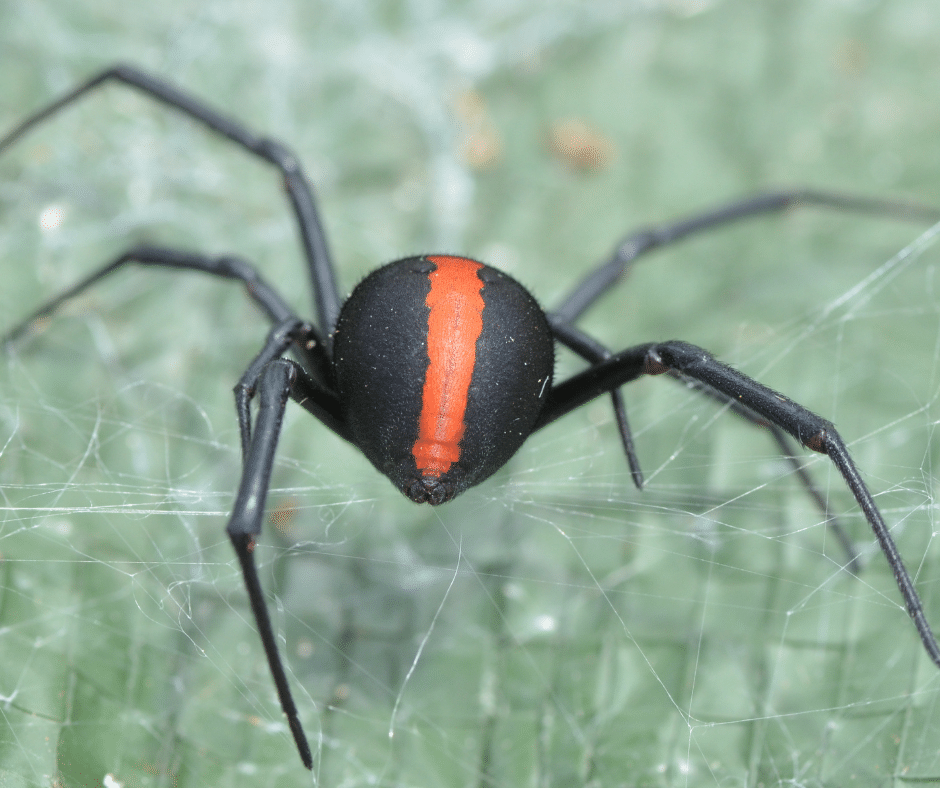The spider is just one of the many animals feared by many, but when we present them in pictures they can even be a little cute. They are very diverse and have different shapes and color patterns depending on the species.
They normally live outdoors, although some build their webs inside caves or houses, where they can get to food sources around people.

The spider shown here is Nephila edulis, she builds a web between vegetation above the ground and eats whatever falls into it. It belongs to the order Araneae and family Araneidae of arachnids that are widely distributed around the world except for Australia.
Its capture quickly became an attraction in many parts of the world, where it is considered a real trophy. The male has a smaller body than the female and they are different in color. The female can reach one meter and the male about 30mm in size.
There are other species of the same spider but they differ slightly to distinguish them from each other. Some have red spots on their abdomen, others have white spots and some are completely green.
Two varieties that are also very similar but have different colors stand out: the red-backed spider (Lampona cylindrata) and the black-eyed leaf spider (Pholcus phalangioides). Both species live near water or wet places where they can find the food so needed by the spider.
The female can live about 2 years, producing an egg sac and staying with it until they hatch. This process takes several weeks depending on the conditions of temperature and humidity that exist in their environment.

The threads produced by these Spiders are very strong and resistant to ultraviolet radiation for up to two years. When they hatch, the offspring remain on the same web for a short time until they go out to explore and capture the first prey.
The spider is found in many tropical or subtropical areas of the world such as Australia, Africa, Asia (especially India), North America and Europe.
In Europe it is called “Golden Silk Spider” or “Shiny Spider”, but in Asia it is known as the “Jumping Golden Silk Spider”. It is a very dangerous spider and can deliver a strong bite that can cause severe pain and sweating. Its fangs are long, curved and very powerful.
One of the species found within Europe, whose bite causes intense pain to humans, is the Tarantula. We can differentiate between male and female by evaluating two key characteristics: to females, the abdomen is wider than their cephalothorax (first division of the body), while males have an abdomen narrower than the head portion.
Their mouth parts are different: males have a tooth on the inner edge of each fang, while female do not.
They can reach about 20cm in size and hunt alone or in groups. They eat slugs, grasshoppers, crickets, beetles and small lizards that fall into their webs. When prey is trapped within their web, they attack it from behind to avoid being detected. They can live about 15 years and their life cycle is longer than 10 months.

The female constructs a large nest where she lays her eggs and the male fertilizes them after mating; they hatch a few weeks later. Normally, the male dies soon afterwards because his reproductive activity deprives him of nutrients that are essential for his survival. The female provides all the sustenance they need until maturity and it takes about 15 months.
The spider is often used in popular culture as a symbol of menace; However, there are some species of Tarantulas that are considered harmless to humans: the Brazilian Pink Bird-eating Spider (Pterinopelma sazimai) and the Peruvian Green Tarantula (Nhandu chromatus). These species are popular because they never attack humans.
The spider is not just a frightening creature because of their venomous bites, but they are also considered beautiful animals. It is necessary to learn how to live with them because these spiders contribute significantly to the balance of nature. In addition, it is not easy to identify which species are dangerous and which are not because most often people only read about their negative traits.
